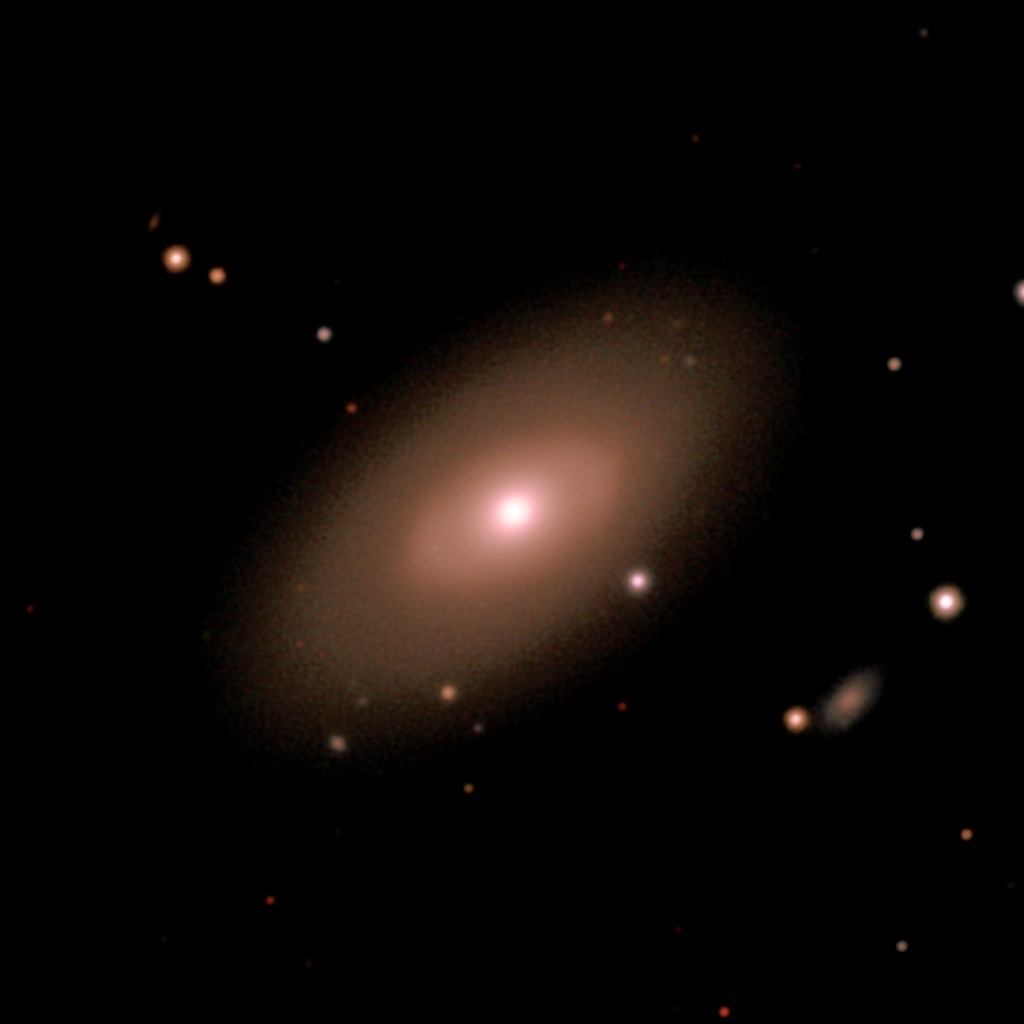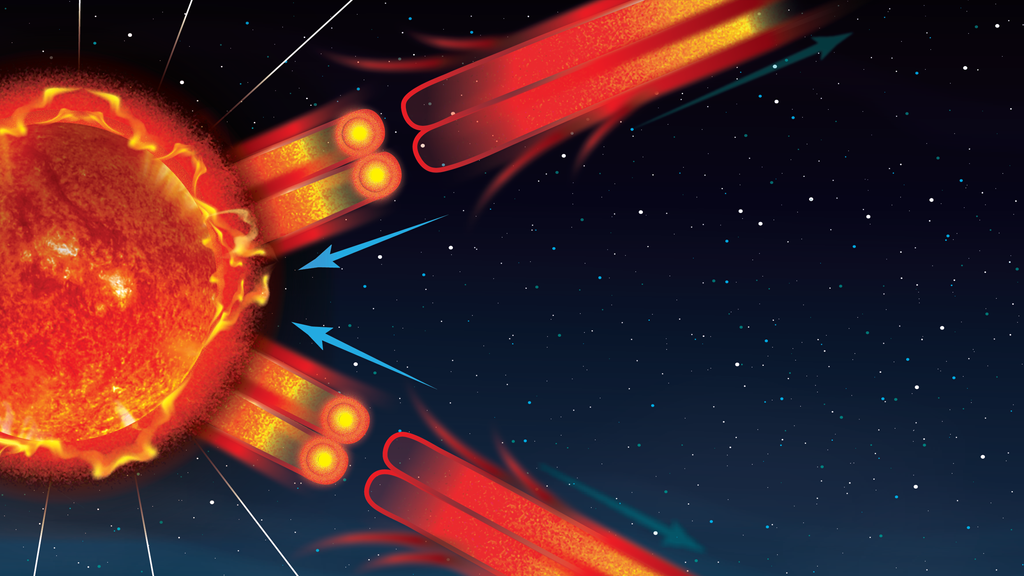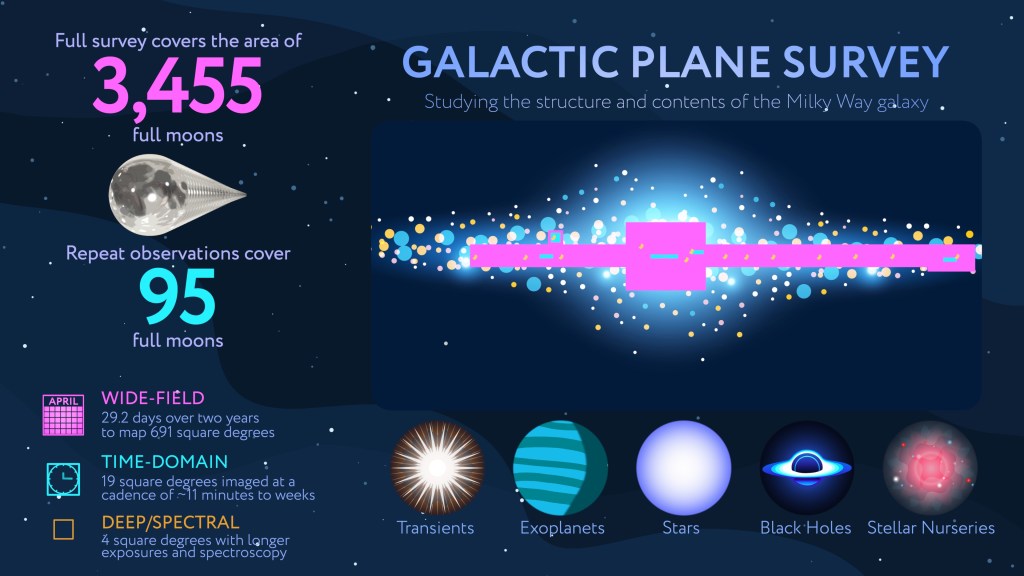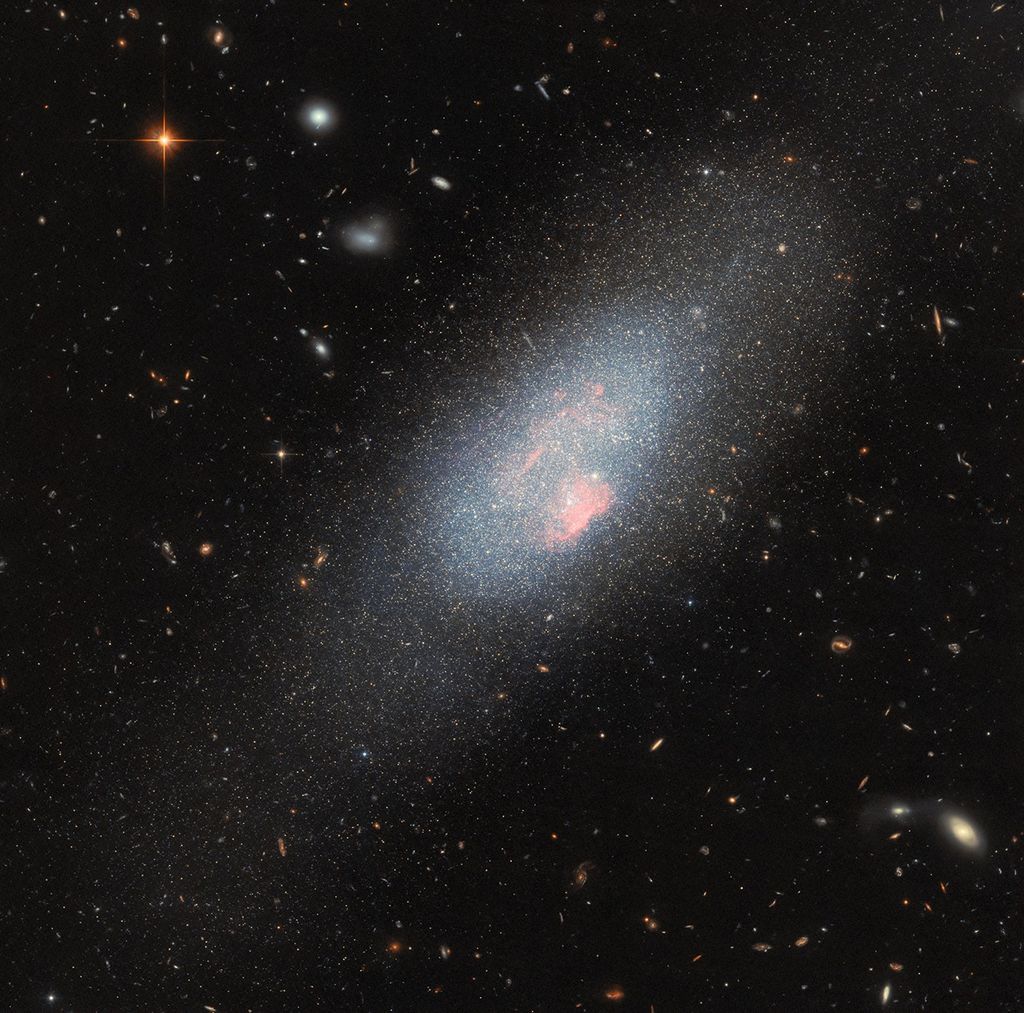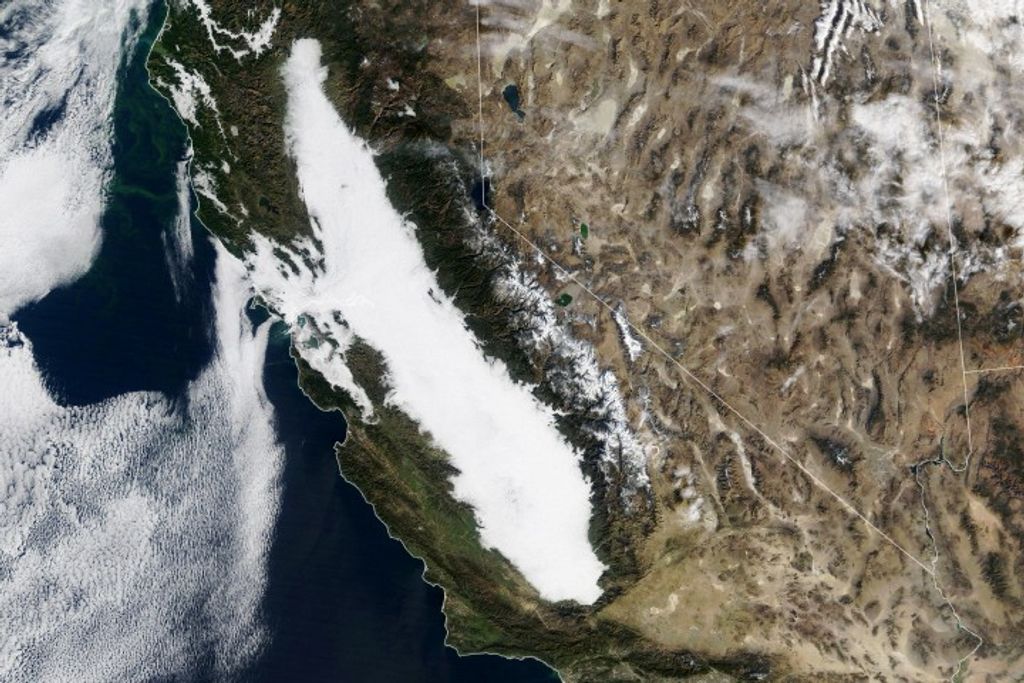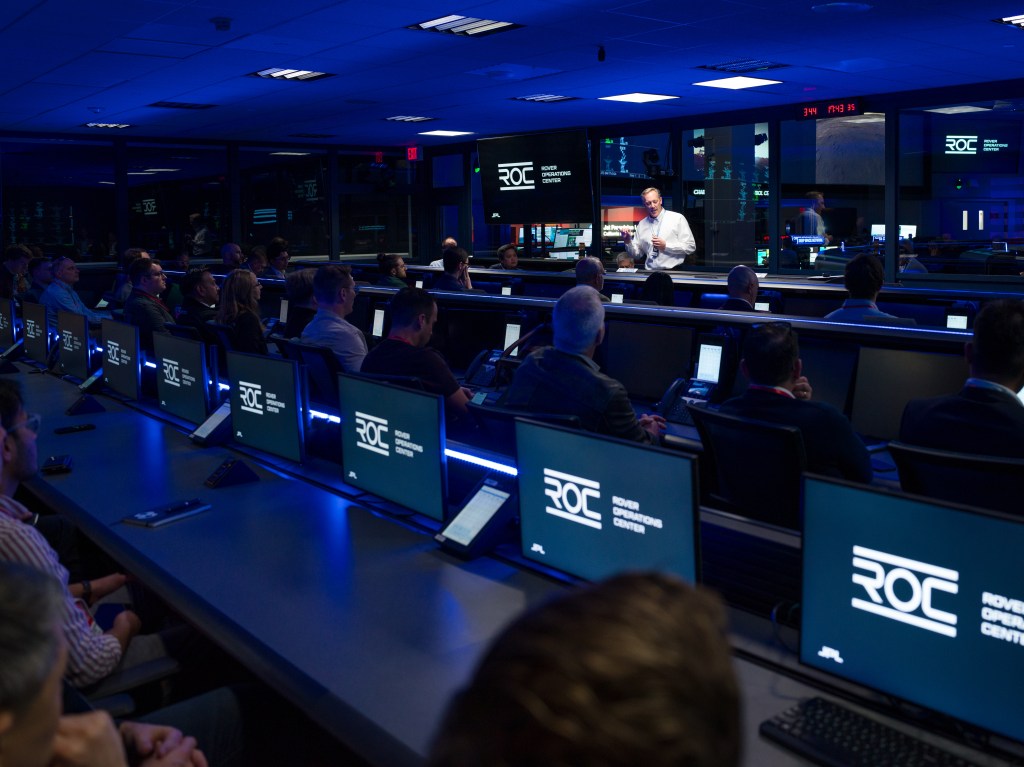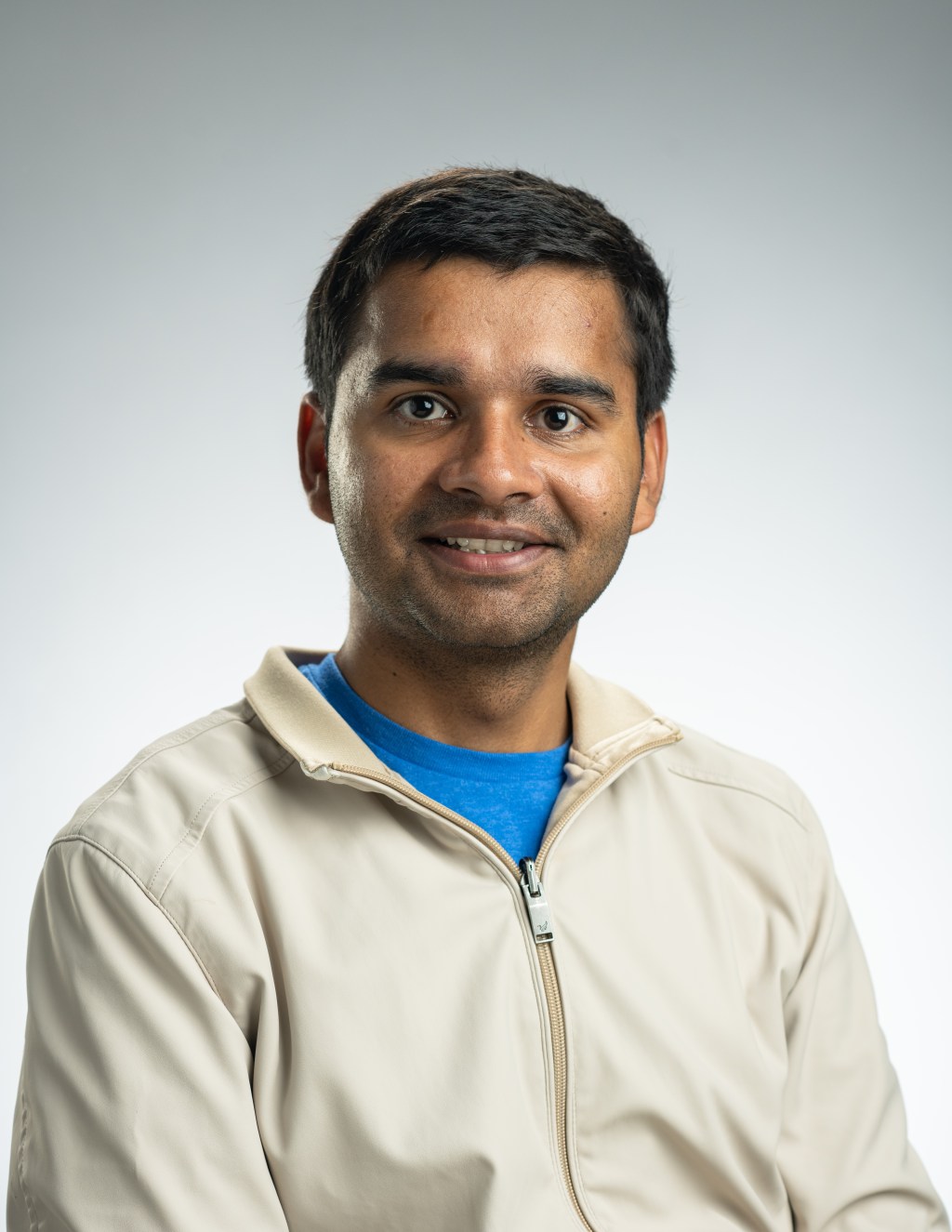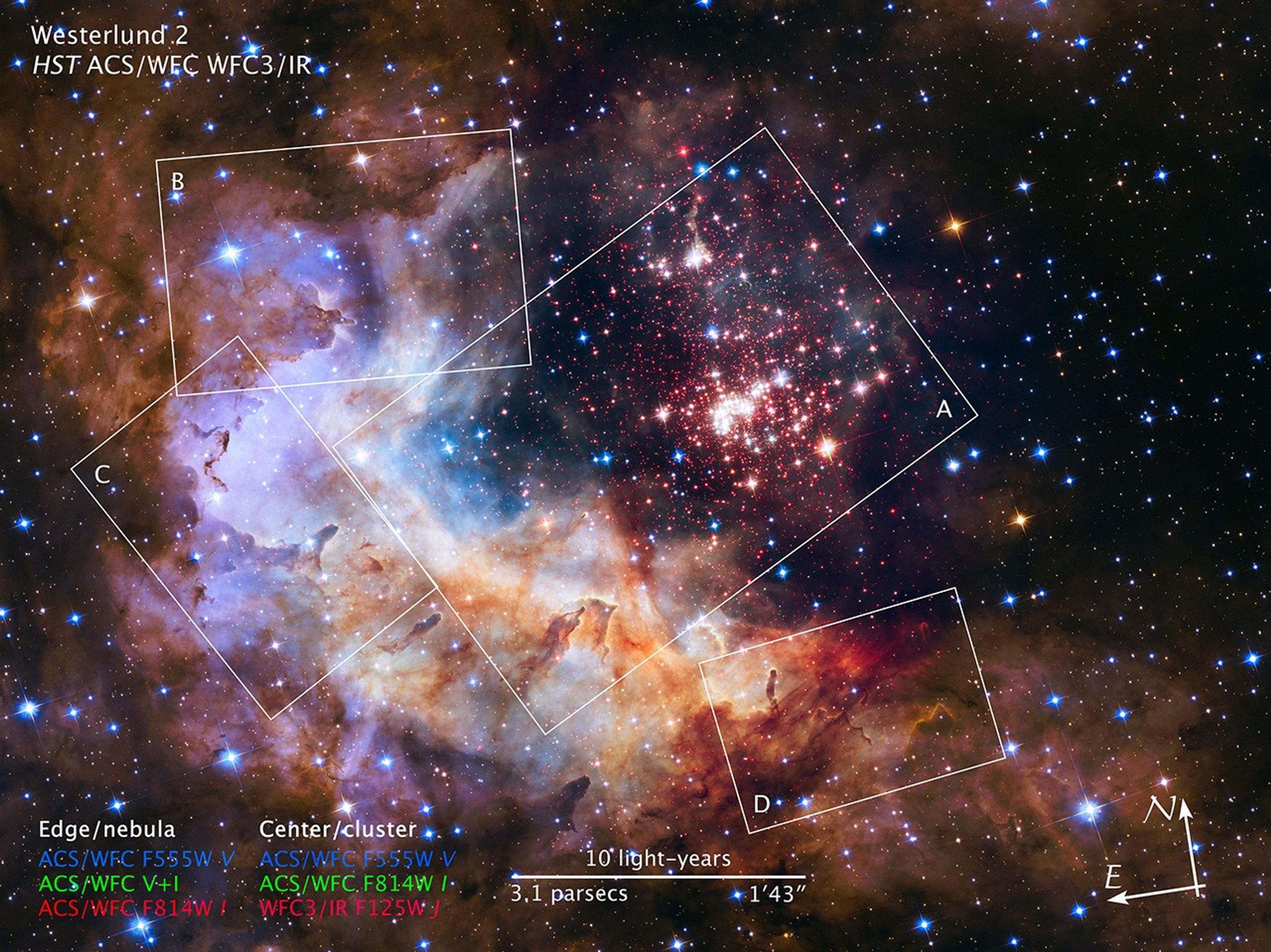1 min read
Westerlund 2: Detail 1

About the Object
- R.A. PositionR.A. PositionRight ascension – analogous to longitude – is one component of an object's position.10h 23m 58.1s
- Dec. PositionDec. PositionDeclination – analogous to latitude – is one component of an object's position.-57° 45' 48.96"
- ConstellationConstellationOne of 88 recognized regions of the celestial sphere in which the object appears.Carina
- DistanceDistanceThe physical distance from Earth to the astronomical object. Distances within our solar system are usually measured in Astronomical Units (AU). Distances between stars are usually measured in light-years. Interstellar distances can also be measured in parsecs.20,000 light-years (6,130 parsecs)
About the Data
- Data DescriptionData DescriptionProposal: A description of the observations, their scientific justification, and the links to the data available in the science archive.
Science Team: The astronomers who planned the observations and analyzed the data. "PI" refers to the Principal Investigator.Data of Westerlund 2 were obtained from the HST proposals 13038: A. Nota (ESA/STScI), E. Sabbi and C. Christian (STScI), E. Grebel and P. Zeidler (Astronomisches Rechen-Institut, Zentrum für Astronomie der Universität Heidelberg), M. Tosi (INAF, Osservatorio Astronomico di Bologna), A. Bonanos (National Observatory of Athens, Astronomical Institute), and S. de Mink (University of Amsterdam); and 14039: Z. Levay, M. Mutchler, J. Mack, L. Frattare, S. Meyett, M. Livio, and C. Christian (STScI/AURA), K. Noll (NASA/GSFC), A. Nota (STScI/ESA), and E. Sabbi (STScI). - InstrumentInstrumentThe science instrument used to produce the data.HST>ACS/WFC and HST>WFC3/IR
- Exposure DatesExposure DatesThe date(s) that the telescope made its observations and the total exposure time.September 2013 - November 2014, Total Exposure Time: 23,074 seconds
- FiltersFiltersThe camera filters that were used in the science observations.ACS/WFC: F555W (V) and F814W (I) WFC3/IR: F125W (J)
- Object NameObject NameA name or catalog number that astronomers use to identify an astronomical object.Westerlund 2, Gum 29
- Object DescriptionObject DescriptionThe type of astronomical object.Cluster and Starforming Region
- Release DateApril 23, 2015
- Science ReleaseHubble Space Telescope Celebrates 25 Years of Unveiling the Universe
- Credit
Related Images & Videos

NASA Unveils Celestial Fireworks as Official Hubble 25th Anniversary Image
The brilliant tapestry of young stars flaring to life resemble a glittering fireworks display in the 25th anniversary NASA Hubble Space Telescope image to commemorate a quarter century of exploring the solar system and beyond since its launch on April 24, 1990. "Hubble has...
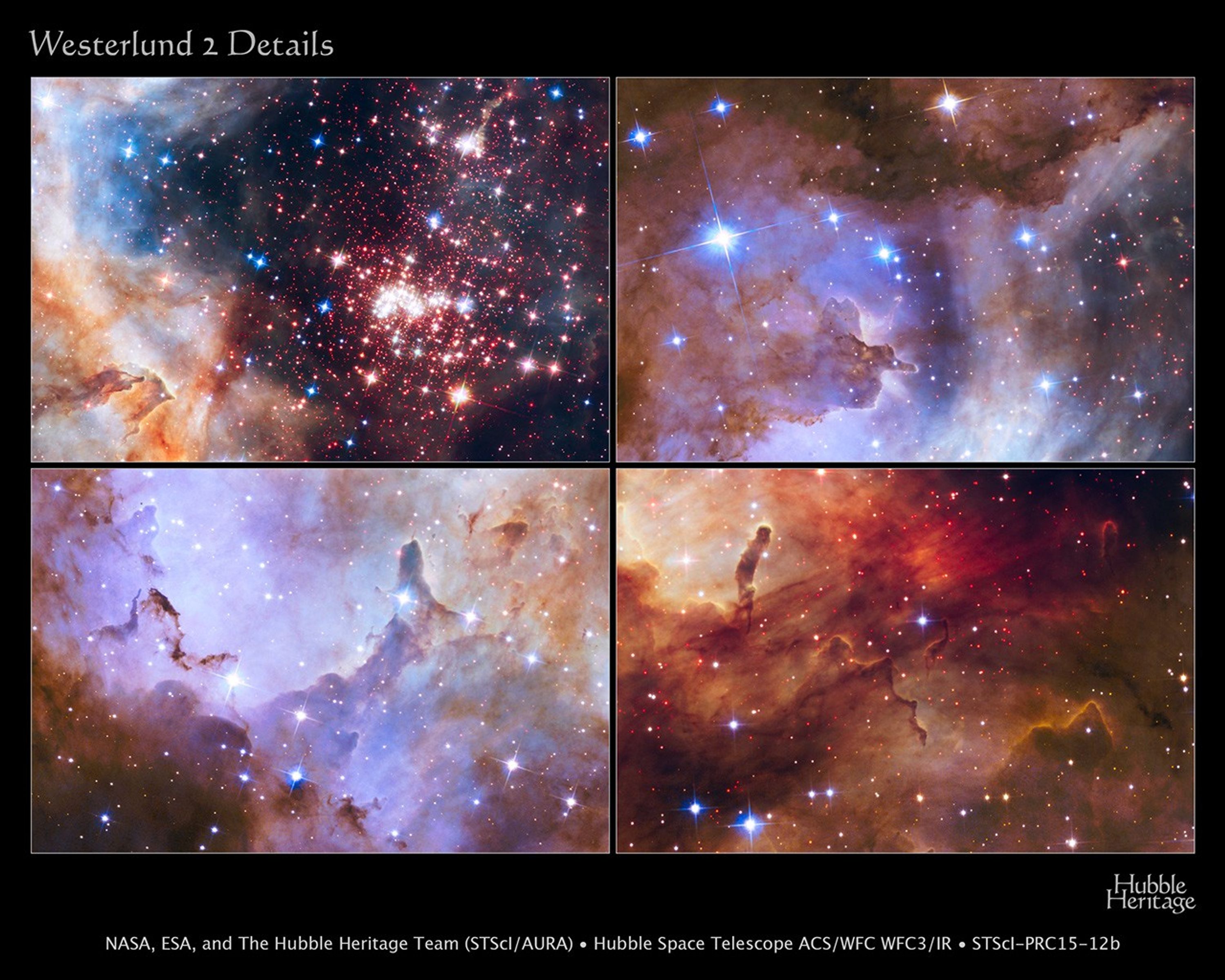
Details of Westerlund 2, Hubble's 25th Anniversary Image
A glittering tapestry of young stars flares to life in this NASA Hubble Space Telescope observation. These detailed close-ups are sections of a stunning image that is being released in celebration of Hubble's 25 years of exploring the universe since its launch on April 24, 1990....

Westerlund 2: Detail 2
Westerlund 2 is surrounded by the star-forming region Gum 29. The heaviest cluster stars are unleashing a torrent of ultraviolet radiation and hurricane-force winds streaming with charged particles, etching away the enveloping hydrogen gas cloud from where the cluster formed....

Westerlund 2: Detail 3
The pillars in the star-forming region surrounding Westerlund 2, composed of dense gas, are a few light-years tall and point to the central cluster. They are thought to be incubators for new stars. Besides sculpting the gaseous terrain, intense radiation from the most brilliant...

Westerlund 2: Detail 4
The red dots scattered throughout the landscape around Westerlund 2 are a rich population of newly forming stars still wrapped in their gas-and-dust cocoons. These tiny, faint stars are between 1 million and 2 million years old and have not yet ignited the hydrogen in their...
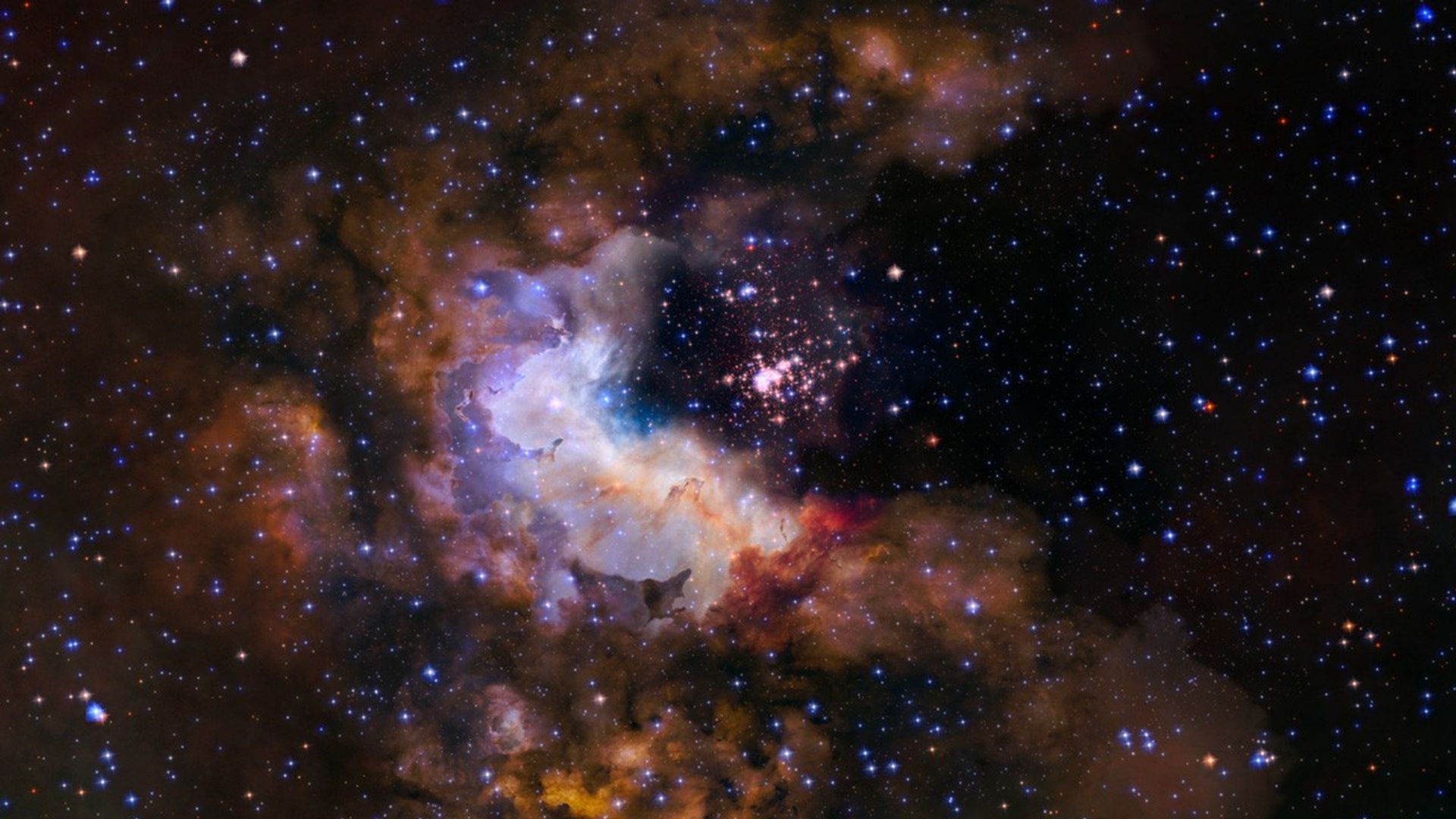
Flight to Star Cluster Westerlund 2
This visualization provides a three-dimensional perspective on Hubble's 25th anniversary image of the nebula Gum 29 with the star cluster Westerlund 2 at its core. The flight traverses the foreground stars and approaches the lower left rim of the nebula Gum 29. Passing through...
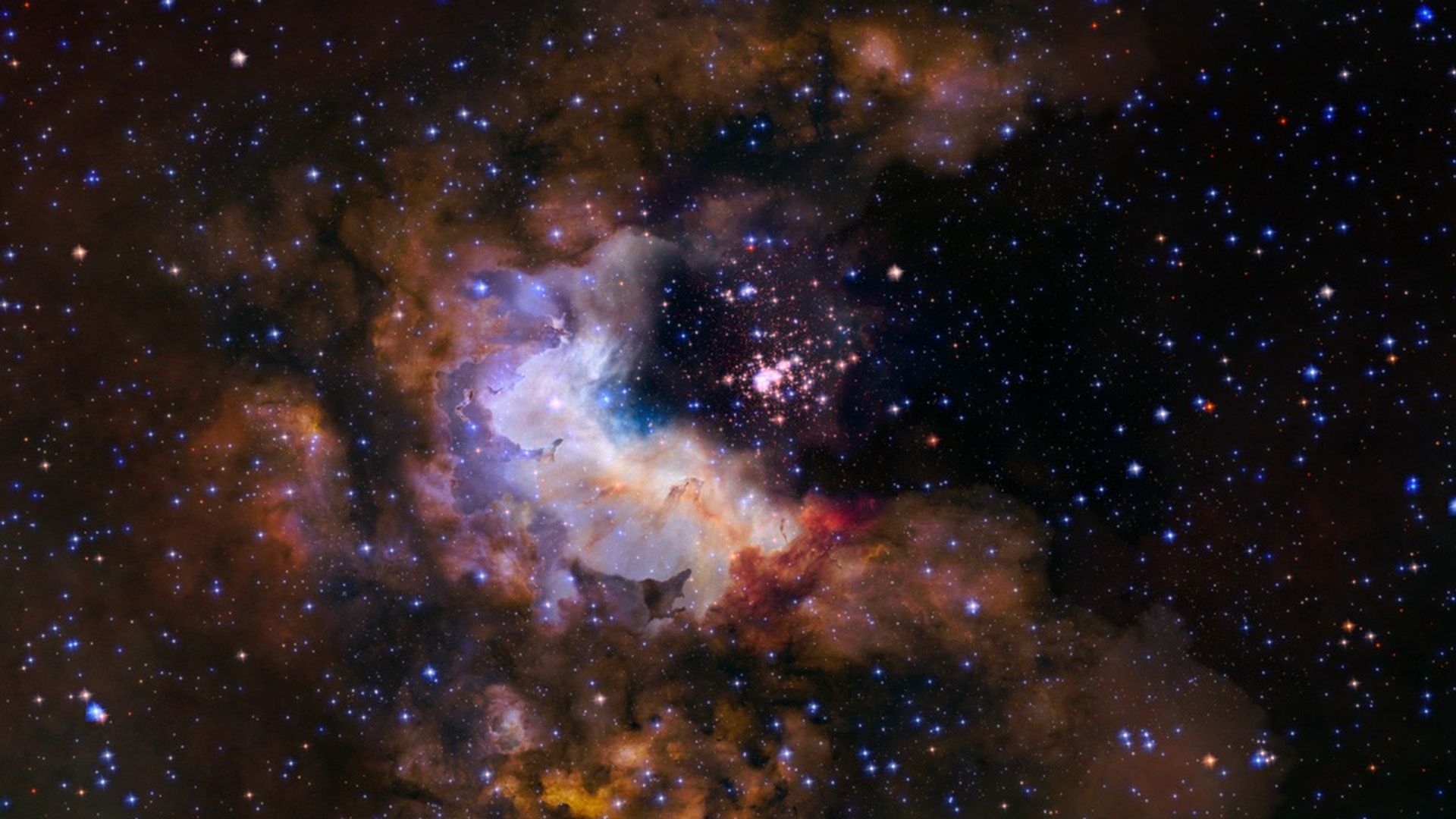
Flight to Star Cluster Westerlund 2 (Slower Flight)
This visualization is a half-speed, and thus twice as long, version of the flight to the star cluster. It provides a three-dimensional perspective on Hubble's 25th anniversary image of the nebula Gum 29 with the star cluster Westerlund 2 at its core. The flight traverses the...
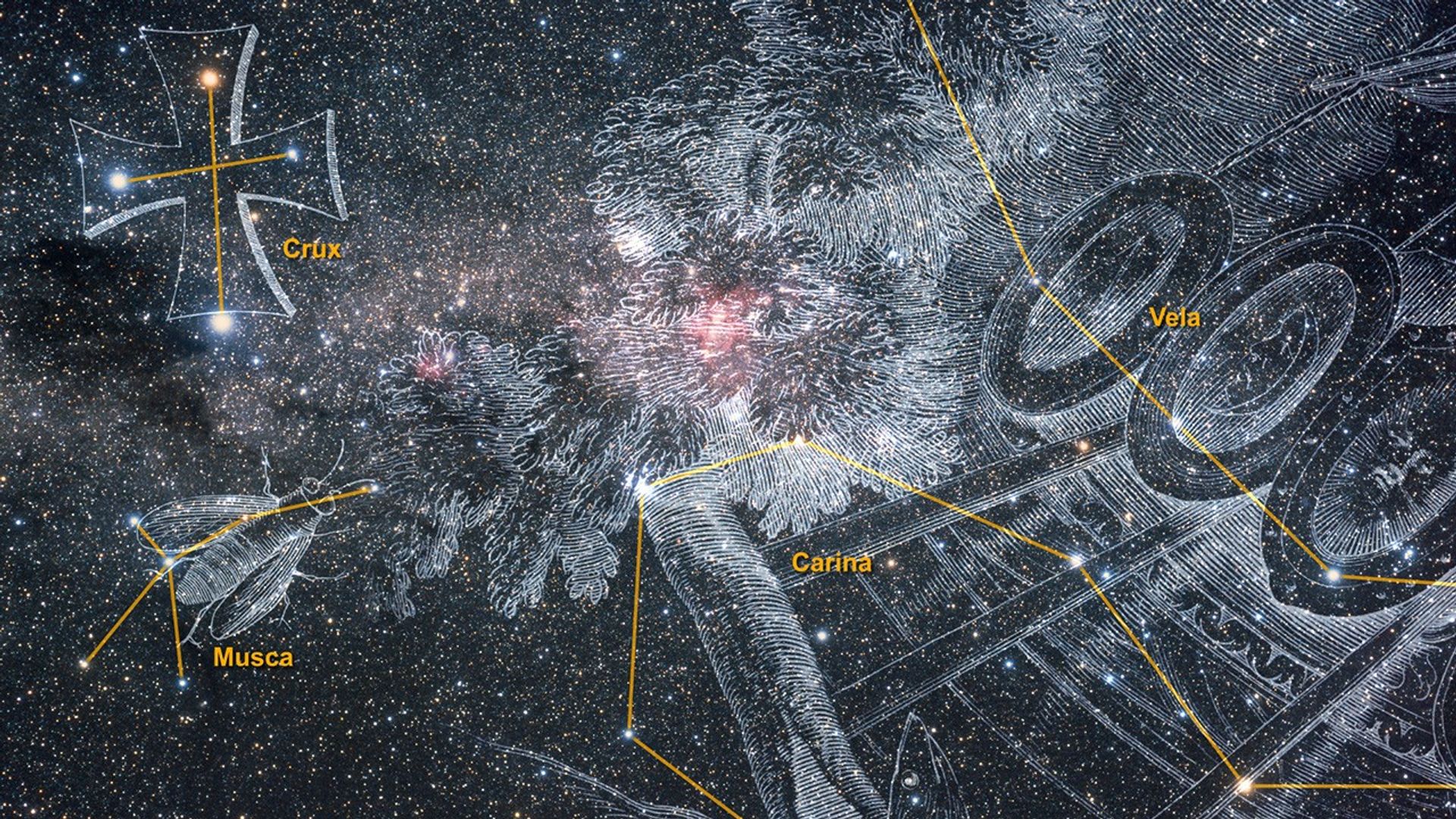
Zoom to Nebula Gum 29 and Star Cluster Westerlund 2
This animation begins with a backyard view of the southern night sky near the constellations of Carina and Vela. After outlining the constellations, the sequence zooms in past the well-known Carina Nebula to the neighboring nebula Gum 29. During the zoom, the images dissolve...
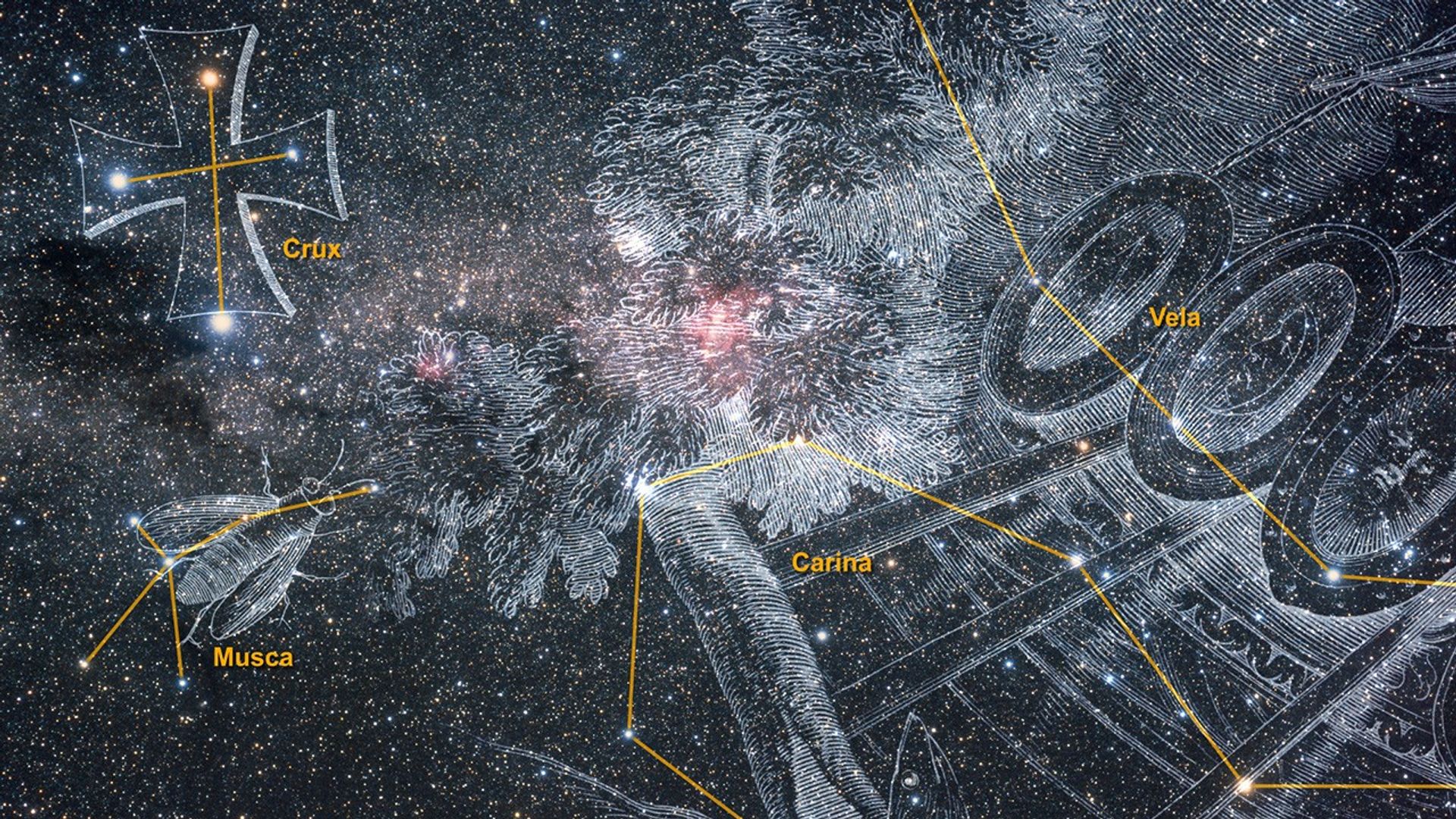
Zoom to Nebula Gum 29 and Flight to Star Cluster Westerlund 2
This visualization provides both two- and three-dimensional perspectives on Hubble's 25th anniversary image of the nebula Gum 29 with the star cluster Westerlund 2 at its core. The animation begins with a backyard view of the southern night sky near the constellations of Carina...
Share
Details
Claire Andreoli
NASA’s Goddard Space Flight Center
Greenbelt, Maryland
claire.andreoli@nasa.gov


